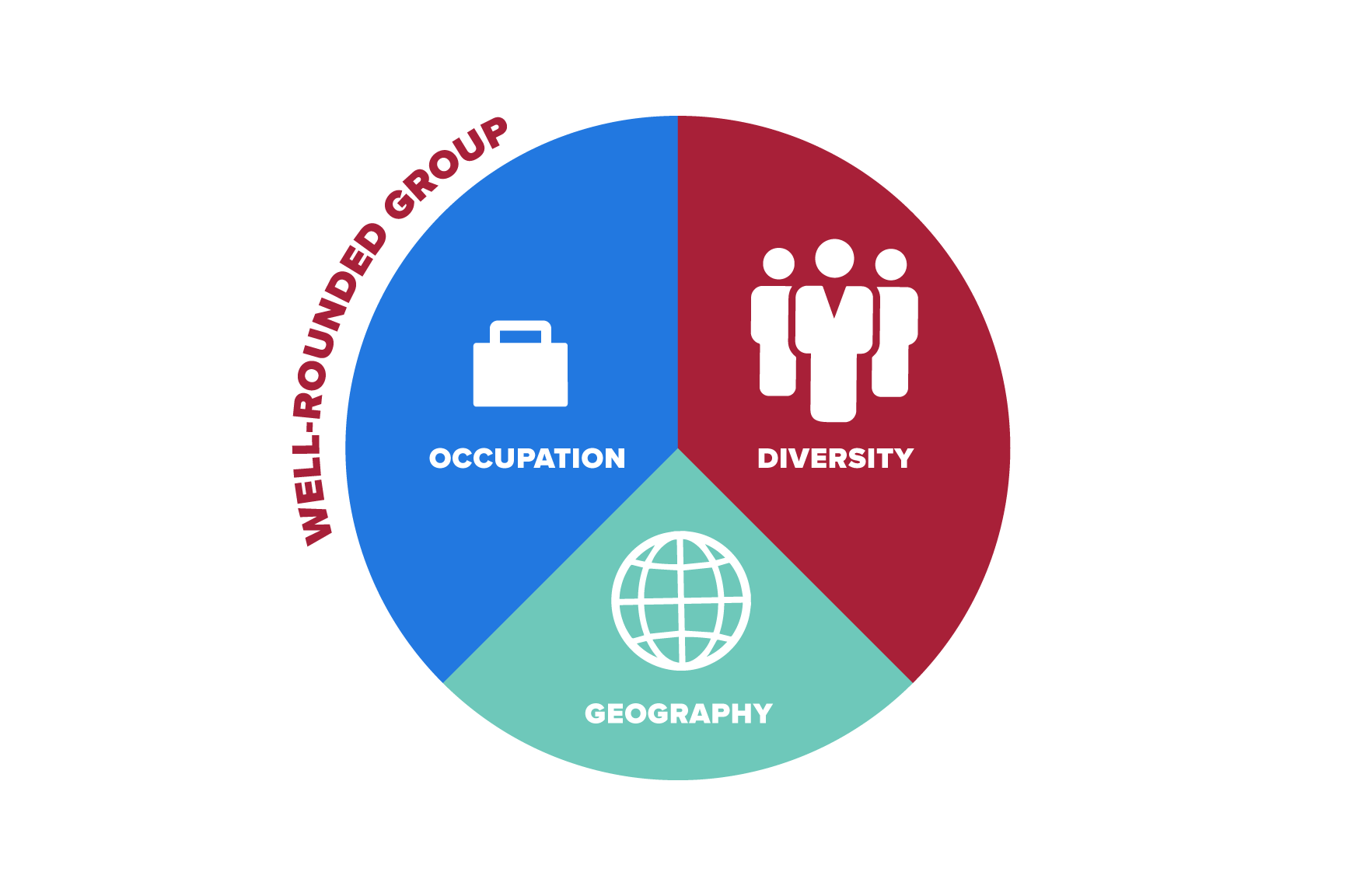At a glance
- It's important to recruit a strong team to help you meet the goals you identified earlier.
- People on your team should have a diverse set of skills and are dedicated to your mission.
- The structure of your training team will depend on your specific needs, goals, and resources.
Five basic steps to choosing training cadre members
When deciding who to choose for your training team (cadre), there are five steps to follow:
- Customize the Training Cadre Application form and the Rubric: Applicant Rating Scale based on your specific requirements.
- Provide the application to potential applicants.
- Form a review committee to help select members.
- Review the submitted applications using the selection rubric.
- Select cadre members.
Application process
Application form
Your application form should include the following:
- Specific need(s) and basic rationale for forming this cadre.
- Contact information for applicants.
- Expected level of commitment for members.
- Estimated time frame of involvement.
- Members' required competencies.
- Preferred previous experience:
- Related to the training.
- Worked with the target audience.
- Built a support base for an initiative.
- Formed partnerships.
- Delivered and facilitated trainings and other professional development (PD) events.
- Related to the training.
- Selection process and rubric for choosing team members.
- Amount of compensation for members, if any.
- Signature of applicants and appropriate administrator(s) or other approver(s).
You can customize the available rubrics to meet your needs so that applicants know how team members are selected. The rubrics will also help your selection process.
While this process may seem lengthy, refer to training cadre case #1 to learn the importance of having a solid process.
Training cadre case #1
The importance of setting expectations
Two trainers from a newly formed cadre were asked to conduct trainings on specific topics. Evaluation feedback showed two very different results from each session. Participants in the first session did fun exercises but left without gaining actionable knowledge. Participants in the second session had the opposite experience. The trainer provided a thorough overview of the topics, chances to practice, and a plan for follow-up support. The cadre selection team did not thoroughly review the experience and qualifications of either trainer. Also, the team was also not clear on required competencies, and neither trainer was given clear expectations. As a result, the less-qualified trainer was not adequately prepared to deliver the training.
Lesson learned: thoroughly review experience and qualifications during the selection process, and clearly relay expectations.
Candidate screening and rating
When you have applications from potential members, it can be helpful to have a small internal team review applications. Look for applicants who:
- Are motivated to achieve the goals.
- Are champions who will make a difference.
- Have demonstrated success in the field.
- Have strong skills in both communication and delivering trainings and PD events.
- Have knowledge relevant to the work.

Characteristics of a strong training cadre
As you review applications, work with your review committee to match applicants against the applicant rating scale. Identify members who will fill specific roles and form a high-performing team. View the checklist for Characteristics of High-Performing Teams.
When final selections are made, contact the candidates to offer them placement in the cadre.
Once your cadre is formed, schedule a kickoff meeting.
- Organizational leaders.
- Administrators.
- Organizational staff.
- Staff at partner organizations.
- Higher education partners.
Your new cadre
Cadre structure
The cadre organization will depend on several factors. Factors include the size and regional makeup of your organization, the cadre's purpose, and the desired number of team members.
An effective cadre structure might have one or more representatives from each department, other organizational unit, or partner. See the illustration in this sample cadre Organizational Chart.
The sample organizational chart is a template that you can customize to best accomplish your goals. From there you can identify gaps in representation.
Examples of member roles
- Champion and advocate.
- Speak with other administrators and decision makers.
- Provide professional development.
- Join conversations about improving physical education curricula.
- Work with preservice teachers.
- PD site coordinator.
Potential team member roles
Kickoff meeting
The kickoff meeting is an opportunity to form a dynamic and effective team. It sets the tone for the work of the training cadre. Some suggested activities for your kickoff meeting are to:
- Establish group norms for:
- Participating in meetings.
- Addressing questions that arise.
- Scheduling how often to meet.
- Participating in meetings.
- Revisit the purpose of the cadre as a collaborative activity, and discuss your:
- Vision.
- Mission.
- Goals.
- Objectives.
- Vision.
- Decide on the roles of each team member.
- Identify online collaboration tools to use.
You can customize the Training Cadre Kickoff Meeting: Agenda and use it to facilitate your meeting.
- What are barriers to recruiting your team?
- What are barriers to getting started with the kickoff meeting?
- What can help overcome these barriers?
Resources
- Applicant Recommendation
- Applicant Training Experience
- Characteristics of High-Performing Teams
- Coordinator Roles and Responsibilities
- Factors That Contribute to High Performance
- Organizational Chart
- Potential Training Cadre Structures
- Rubric: Abbreviated Candidate Selection
- Rubric: Applicant Rating Scale
- Rubric: Detailed Candidate Selection
- Successful Candidate Agreement
- Training Cadre Application
- Training Cadre Kickoff Meeting: Agenda
- Training Cadre Member Roles and Responsibilities
